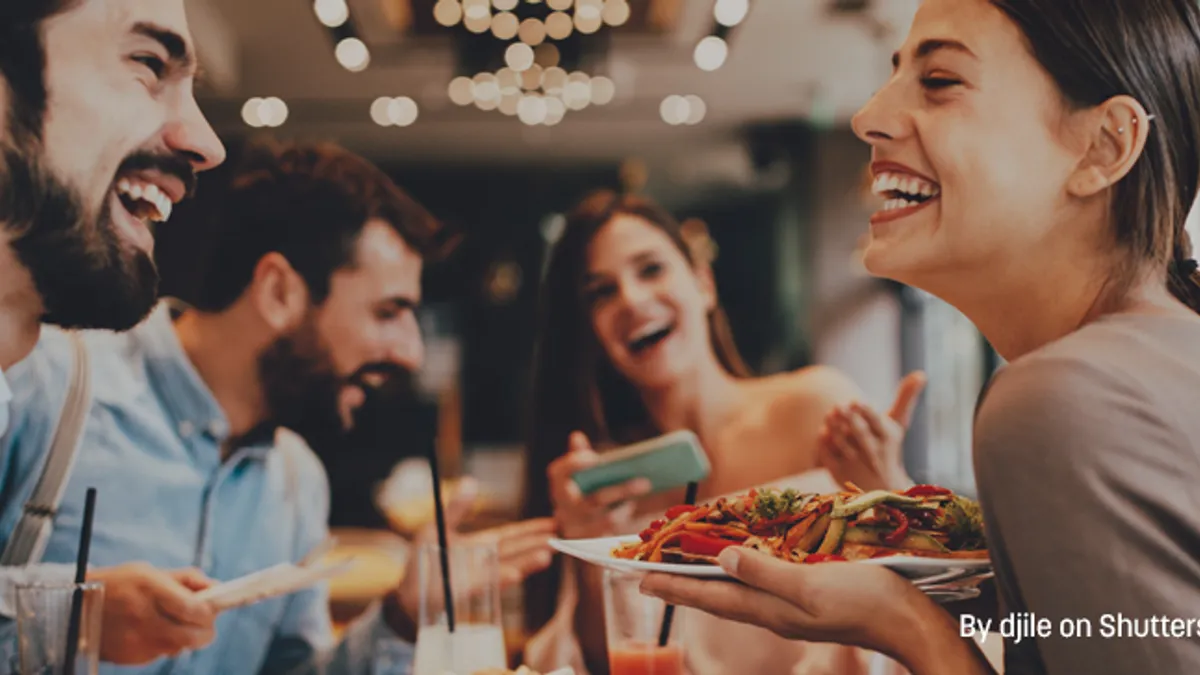Dive Brief:
- Dine-in sales rose 46% in Q1 compared to the year-ago period, while takeout and delivery sales declined 7%, a Toast Q1 trends report finds. This shift in sales comes as government authorities lift many remaining pandemic restrictions.
- As diners return to restaurants, they are tipping more for on-premise service than they do for takeout and delivery orders. Guests tip an average of about 20% when they dine on-premise, versus 15% for off-premise transactions, Toast's report finds.
- Tipping percentages at both full-service and quick-service restaurants have remained consistent throughout the past two years, according to Toast. Full-service tips averaged 19.9%, while QSR tips averaged 17%.
Dive Insight:
The consistency Toast found in tipping differs from other studies that have observed an uptick in tipping during the pandemic. Popmenu found in a December report that 58% of consumers increased the amount they usually tip servers and delivery drivers, with most tipping more than 20%. Popmenu cited higher awareness of the industry’s challenges and compensation structure as a factor in driving tipping behavior.
The disparity between dine-in and off-premise tipping indicates many consumers are willing to pay extra for service and experiences. It may also hint at pent-up demand for dining out after two years of restrictions. PYMNTS research released in February found 61% of Americans would like to dine at restaurants more than they currently do.
That pent-up demand may be contributing to the the decline in takeout and delivery sales compared to the double-digit growth for dine-in in Q1. Toast data that shows this shift echoes data Technomic shared with NBC, which found in-person dining reached a post-pandemic peak in Q1, while restaurant deliveries slipped to their lowest level since Q4 2020.
As consumers return to dine-in, the industry will have to contend with challenging labor metrics, as it remains down about 800,000 jobs compared to pre-pandemic highs. Higher in-person tips could aid recruitment, particularly as restaurants compete with gig companies for employees and as delivery drivers struggle with higher fuel costs.
But as restaurants raise menu prices to keep pace with inflation, and as consumers manage their own inflationary pressures, tips could shrink again. According to a new survey from CNBC, 53% of Americans now plan to cut back on dining out as gas prices remain elevated.
In the competition over labor, tipping can be an incentive. But employees have left the restaurant industry at record-high levels the past two years, and steeper tips and wage-growth moderately above inflation have not yet offset the labor losses suffered by the industry in 2020.









